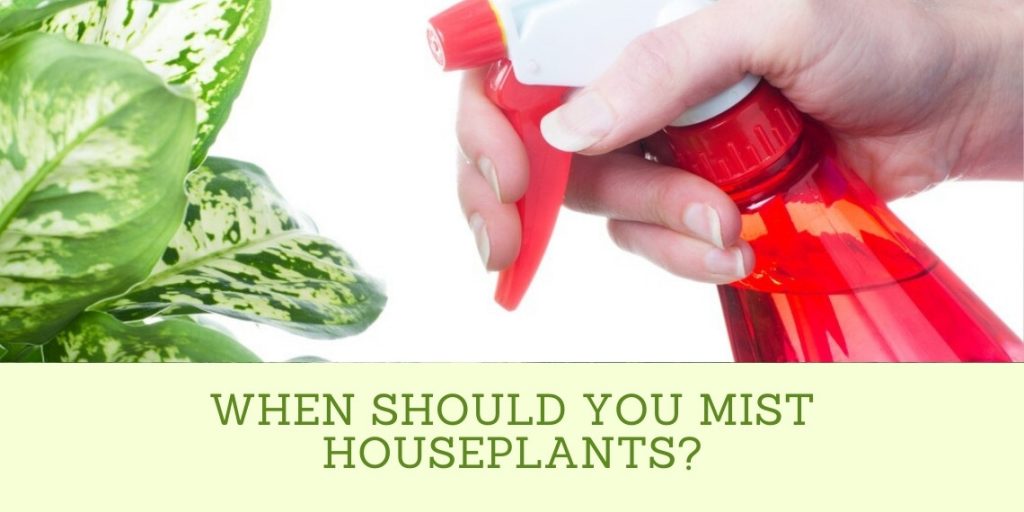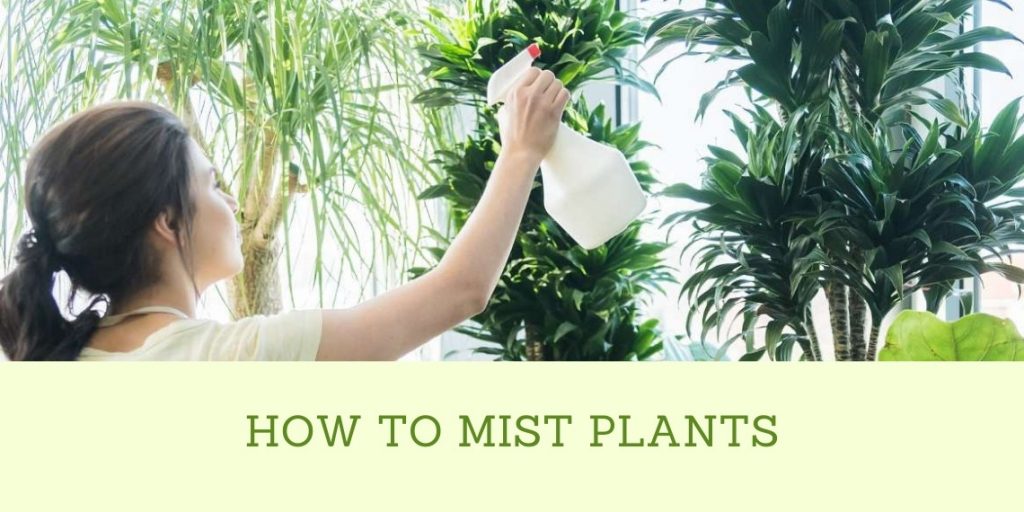Misting can help your plants grow healthy and strong. By misting your plants regularly, you can help them to absorb more nutrients, stay hydrated and resist pests and diseases. This is a simple technique that can be done in the morning or evening, depending on the plant species.
Misting will help regulate the humidity of the room and increase airflow, which will then create a healthier environment for your plants. It is also incredibly beneficial for plants planted in small pots or flower pots. Misting them will keep the soil moist, which will help prevent wilting and death.
Check out this article for more information on how to mist your houseplants and also how misting can benefit your plants.
Why Do You Need to Mist Houseplants?
Houseplants are often used to improve the air quality in our homes. They naturally absorb carbon dioxide and give off oxygen which makes them an efficient natural purification system for your home.
However, they can still get dirty or dry out over time and need to be misted with water on occasion in order to maintain their health.
Misting houseplants can also help raise their temperature if they live in a colder room. Some plants, such as succulents and cacti, need more water than others, so misting is required more often for these plants to avoid wilting or browning leaves.
Misting houseplants serves another function as well: pest control. Houseplants can be a way to keep certain pests out of your home (particularly if the plant is outside and away from other homes).
Misting houseplants with water won’t hurt beneficial insects such as lady beetles that want to dine on aphids, but it will discourage the pests. The spray from misting houseplants should be enough to prevent many insects from venturing onto the plant or laying eggs on it.
Misting houseplants is also a good idea if you don’t have a green thumb and are not particularly interested in caring for plants. This is because this method of helping them stay healthy will take some of the work off your hands.
When Should You Mist Houseplants?

It is ideal if you mist your houseplants with water every day or at least once every other day. However, the actual need for misting will depend on the type of plant and its location inside your home.
This weekly misting will also help to remove any dust particles that may have built upon the leaves, which could also become a problem if left unattended.
Plants that are in lower light areas will not need to be misted as often since they receive less water. Also, plants that are located in rooms with central heating or air conditioning will need less misting.
Mist your houseplants when they have droopy, dry or wrinkled leaves. This is a sign that the soil has been allowed to completely dry out and needs water in order to perk up again. Greenhouse growers that have a fogging system will use it several times a day on their plants.
Plants You Need to Mist
You should mist all of your plants, but there are a few that especially need it. Here are some plants that you’ll need to mist often – ferns, orchids, dracaenas, anthuriums, palms, calla lilies, philodendrons, yucca plants, rubber plants, caladiums, and air plants.
Plants You Need to Avoid Misting
When it comes to watering, misting is an excellent solution for plants that don’t have many leaves or grow near the ground. However, there are certain plants you should avoid misting – namely those with sensitive roots like African violets, bonsai trees, orchids, and succulents.
How to Mist Plants

Misting plants is an integral part of their care. Not only does it provide them with much-needed hydration, but it also helps to keep the air around them clean and free of dust and other particles.
Here are the steps you need to take in order to mist your plants effectively and ensure that they stay healthy and look beautiful.
Step 1: Fill a spray bottle with water.
Step 2: Spray the leaves and stems until they’re slightly damp.
Step 3: Let the plant do its thing for a couple of hours before doing it again. Keep repeating the process, but try not to over-water, or you’ll kill your plant.
Choose Your Misting Spray Bottle
Plant misting spray bottles are available in most gardening stores and department stores. They come in various shapes, sizes, and designs. You can even choose to purchase your misting bottle online if you don’t want to spend time traveling to find the ideal one for your requirements.
Before you buy a misting bottle, check to see if the spray will be fast-acting or slower. A faster one is better for houseplants because it ensures that their leaves are sprayed quickly and thoroughly.
Be sure to choose a plant misting spray bottle that is easy to use – for example; you should try out the sprayer before buying it. You should also check to make sure that the bottle is made from good quality material.
You may want to buy a bottle that has a trigger-type sprayer as opposed to an on/off switch – this ensures you can easily control the amount of liquid released. In addition, there are different sizes available – choose one that will best suit your needs.
Misting Tips
When you’re buying a misting bottle, also remember to pick up extra nozzles. You’ll want to have at least two spares on hand. This way, you can easily replace one if it becomes clogged or damaged.
During warm weather, make sure that the plants are placed away from your house’s cooling system to ensure that they don’t get too cold. Cold couches and floors intensify the cool air coming out of air conditioners and fans.
Misting Your Plants
Fill your plant mister bottle with water and water your plants thoroughly. Make sure that you spray each individual leaf to get rid of any dust, dirt, or other particles that may be clinging to their surface.
Mist your plants at least once every two weeks in order to keep them looking great all year round. Remember that during winter, your plants need less water because they are in a state of rest. Only mist when they look and feel dry.
Avoid spraying water on your plants during cold weather in order to prevent them from developing winter rot, a common problem that occurs when the soil is too moist and cold. Spray them in early spring and summer for best results.
Keeping your Houseplants Alive and Healthy
Plant experts recommend putting houseplants within five feet of the nearest window. If you don’t have a good spot for your plants, consider buying a grow light.
Furthermore, make sure your houseplants are draining properly. Even if you aren’t overwatering your plants, they can still be drowning in water. Houseplants need drainage holes to ensure their roots get oxygen and they can breathe.
If you have several houseplants that are located in the same spot, be sure to rotate them every now and then, so they all receive enough sunlight. Don’t overwater your houseplants or let them dry out. After watering your plants, let the soil dry out before doing it again to prevent overwatering.
Repot your plants every couple of years. If you find that you’ve been repotting your plants more often than every two years, it could be a sign of over-watering or excess fertilizer intake. Keep in mind that houseplants like to be snug in their pots and prefer smaller root growth.
Also, avoid using sulfur-treated tap water since it can cause damage to your plants. Water with distilled or purified water instead. Finally, consider grouping some houseplants together. Some plants like peace lilies and spider plants release cleansing chemicals as a defense mechanism against bugs and pests. This can be helpful if you have a few houseplants that attract various insects.
Misting vs. Humidifying
The benefits of misting your plants rather than humidifying them are many. Misting adds moisture to the air and prevents your leaves from drying out, which is excellent for maintaining healthy foliage. Using a humidifier is less effective in terms of adding humidity to an area like misting is.
It’s crucial that you mist your plants rather than humidify them because misters are better at adding moisture to the air around your plants. Misters are also great for removing dust from leaves, which is an added bonus.
Humidifiers are less effective at maintaining humidity levels because they only cover a particular area, whereas misters will work much more effectively.
Furthermore, don’t humidify your plants in order to avoid fungus and other rotting issues. Misting is a great way to add moisture to the air in order to benefit your foliage.
However, it’s not as effective in humidifying the entire area as humidifiers are. Humidifiers can create an ideal space for various types of fungi, which can cause your plants to rot.
Misting provides moisture for the air around your plants, but it’s not as effective as other methods for keeping the humidity up in a room or area. If you use a humidifier on these plants, the fungus can start to grow, which could result in rotting and a need for replacement plants.
The Bottom Line
Misting your houseplants is one of the easiest and most beneficial things you can do for them. Not only does it increase humidity and make them more comfortable, but it helps to provide moisture to help prevent problems such as spider mites, aphids and fungus.
By following these simple tips, you can ensure that your plants stay healthy and looking their best.


